IDEXX SDMA Resource Center
Getting started: How to run the Catalyst SDMA Test.

How to use IDEXX SDMA tests
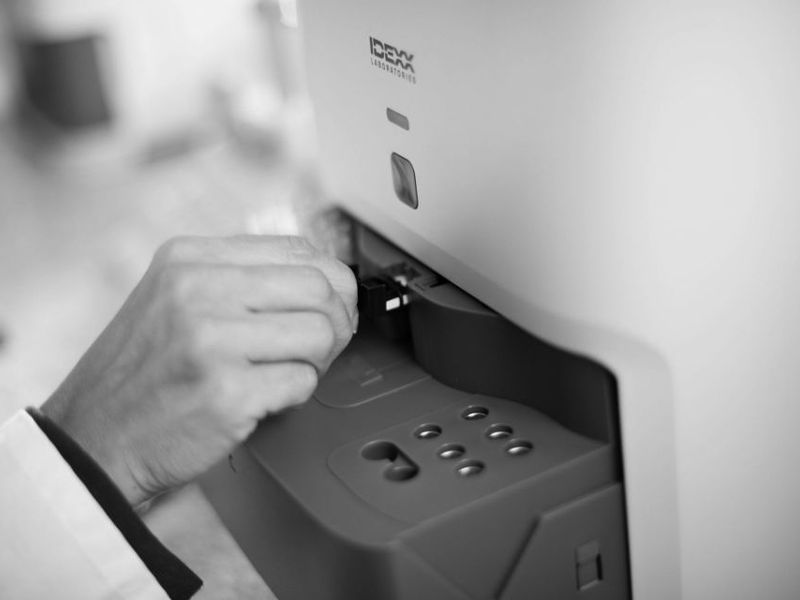
Watch a short instructional video
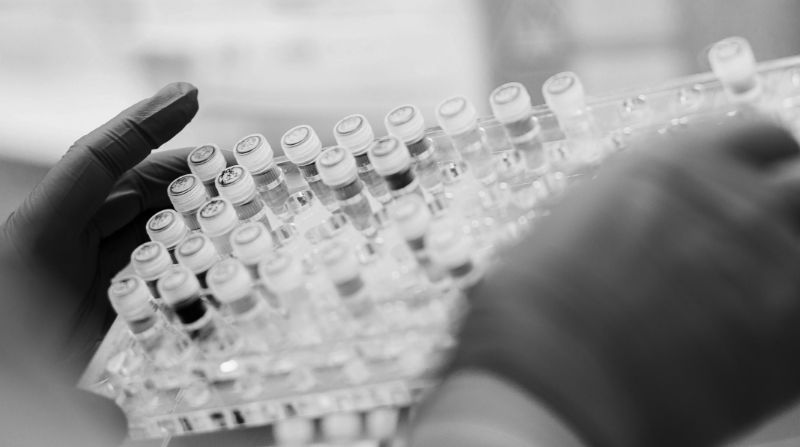
SDMA testing from IDEXX Reference Laboratories.
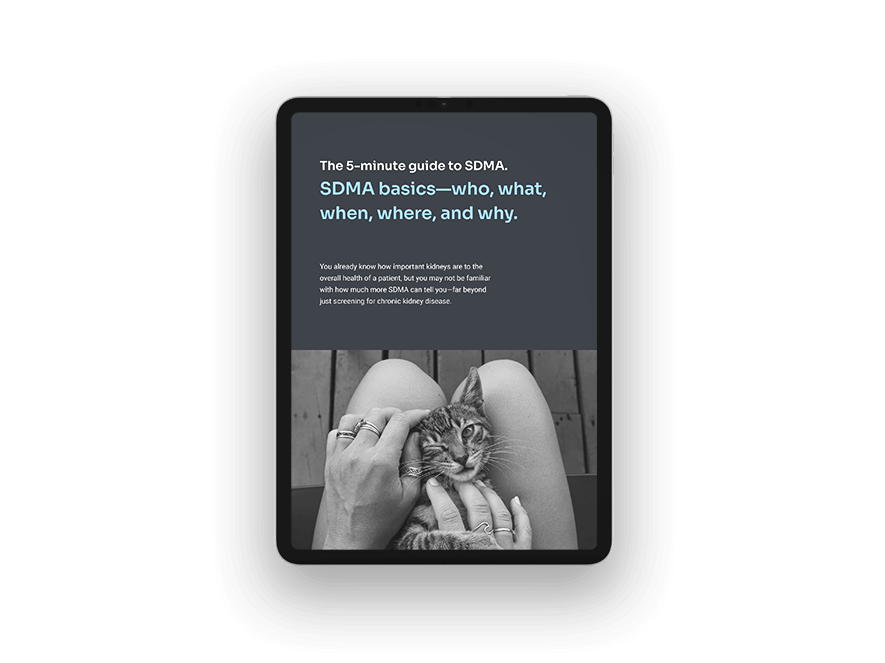
The 5-minute guide to SDMA.
SDMA isn't as complicated as you might think. This 5-minute guide has all the basics you need to get started.
How to run the Catalyst SDMA Test
On a Catalyst One Chemistry Analyzer
- Enter the sample information on the IDEXX VetLab Station.
- Load your sample, chemistry CLIP, and SDMA slide.
- Press the Start button on the analyzer.
On a Catalyst Dx Chemistry Analyzer
- Enter the sample information on the IDEXX VetLab Station.
- Select the patient and sample type on your Catalyst Dx Chemistry Analyzer.
- Load your sample, chemistry CLIP, and SDMA slide.
- Tap Run on the analyzer.
IDEXX offers many SDMA-inclusive profiles to meet your patient and practice needs.
Each can be found on IDEXX Online Orders. Simply save them to your favorites.
Chem 11 profile
Includes a box each of the Catalyst SDMA Test and the Catalyst Chem 10 CLIP.
Part number 99-0013504
Chem 16 profile
Includes a box each of the Catalyst SDMA Test and the Catalyst Chem 15 CLIP.
Part number 99-0013505
Chem 18 profile
Includes a box each of the Catalyst SDMA Test and the Catalyst Chem 17 CLIP.
Part number 99-0013506
Kidney recheck
Includes a box each of the Catalyst SDMA Test, the Catalyst Blood Urea Nitrogen (BUN) Test, the Catalyst Creatinine (CREA) Test, and the Catalyst Inorganic Phosphate (PHOS) Test.
Part number 99-0013052
Answers to common questions about the Catalyst SDMA Test
Running and analyzing the Catalyst SDMA Test is simple. Use these resources to answer your questions about the Catalyst SDMA Test.
Store the Catalyst SDMA Test in the freezer. There’s no need to warm the Catalyst SDMA Test. Just pull it from the freezer when you’re ready to run it.
The Catalyst SDMA Test can be stored in it's pouch at room temperature for up to 8 hours. After 8 hours, store any unused materials in the freezer.
Absolutely. The Catalyst SDMA Test can be run alone or with other slides as part of a comprehensive patient profile. For example, you can run a Catalyst Lyte 4 CLIP, a Catalyst Chem 17 CLIP, a Catalyst Total T4 Test, and a Catalyst SDMA Test with one patient sample.
You can load the slides in any order when running SDMA on the Catalyst One Chemistry Analyzer or with 18 or fewer slides on the Catalyst Dx Chemistry Analyzer. For the quickest time to results on the Catalyst One and Catalyst Dx chemistry analyzers, the recommended load order is Lyte 4 CLIP, chemistry CLIP (e.g., Chem 17, Chem 10), SDMA, any additional slides with Total T4 on top.
Note: Always be sure to load the drawer with pipette tips before every run.
The recommended sample volume to run the Catalyst SDMA Test depends on the type of sample you're using. For whole blood, we recommend 600–800 µL. If you're testing serum/plasma, we recommend 65 µL, or 300 µL to run SDMA with other tests.
Get quick answers on what to do when SDMA is increased here.
Still have questions about how to run the Catalyst SDMA Test?
SDMA testing from IDEXX Reference Laboratories
IDEXX Reference Laboratories includes the IDEXX SDMA Test in all routine chemistry panels. There’s no additional cost, and the turnaround time is the same.
+ IDEXX SDMA Test included in all routine chemistry panels
+ IDEXX SDMA Test
+ Kidney Recheck Panel
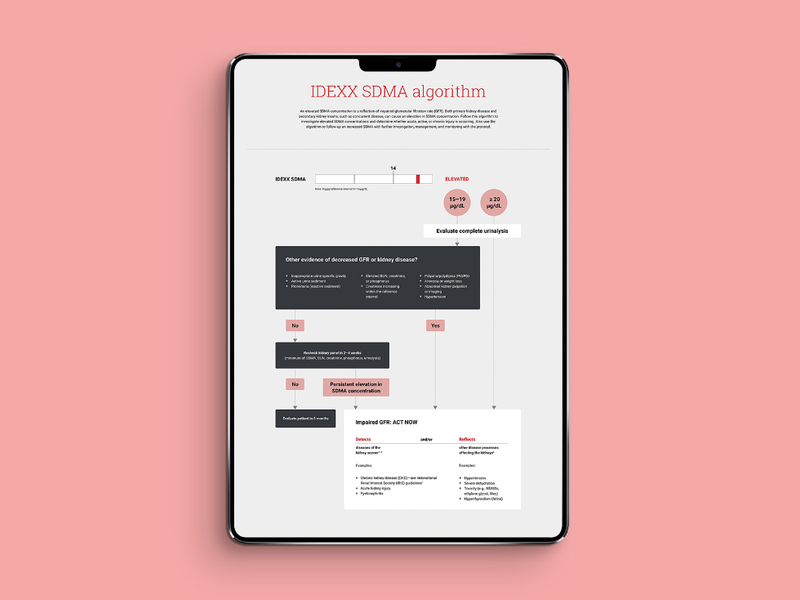
SDMA increased. Now what?
Use the IDEXX SDMA Test Algorithm to take the appropriate steps toward confirming disease and diagnosis.
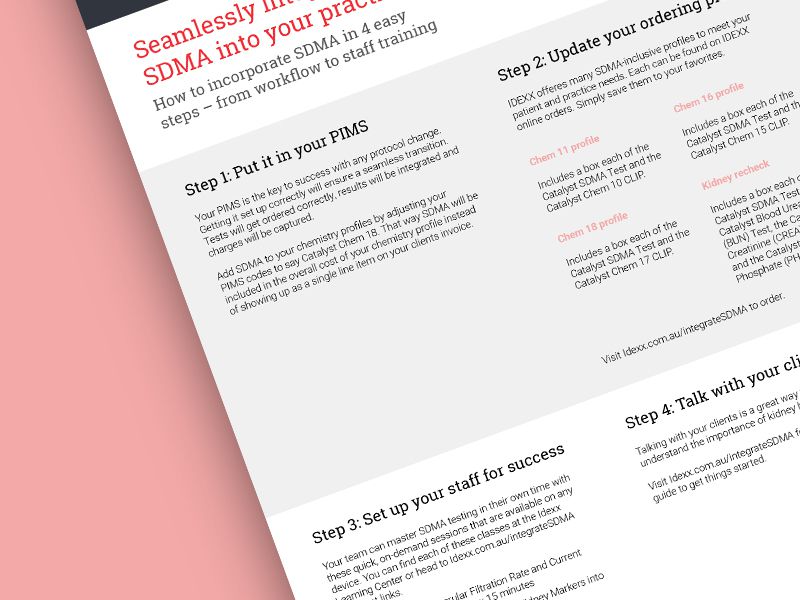
Tools for implementation
Need help getting your practice set up with SDMA testing? Use our practice management resources to quick-start adding SDMA to your protocols and procedures.
Two options: same reliable results
![]() The in-house Catalyst SDMA Test, with multiple SDMA-inclusive profiles to meet your patient and practice needs.
The in-house Catalyst SDMA Test, with multiple SDMA-inclusive profiles to meet your patient and practice needs.
![]() The IDEXX SDMA Test, included with every chemistry panel or as a stand-alone test from IDEXX Reference Laboratories.
The IDEXX SDMA Test, included with every chemistry panel or as a stand-alone test from IDEXX Reference Laboratories.
Note: SDMA is symmetric dimethylarginine.